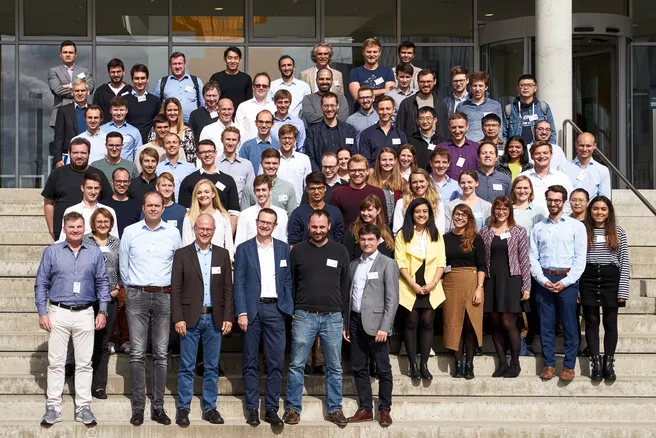Around 80 students, professors and researchers - many of whom are members of TUM.Battery - followed seven talks on topics ranging from the theory of strongly interacting electrolytes to the problems of Hydrogen distribution to the customer. In the first session, three speakers focussed on current research in electrocatalysis and the need for a highly efficient and cheap supply of hydrogen to enable fuel cells. A more applied second session on use of catalysis and the product - hydrogen was bridging the gap to the third session, where battery technology was the focus.
The strong interest of scientists in research fields they are not necessarily experts in, was expressed in the various questions following each talk. Endless discussions were inevitable, if not for the chairmans kind interruptions.
Enabling fruitful discussions, a poster session with eight poster by young researchers from TUM was held.
Encouraging interdisciplinarity as a focus of this event, strengthens the goal of TUM.Battery as fundamental research and applications become increasingly interwoven. The need for interdisciplinarity research was highlighted in almost every talk - from nanoscale processes and models to large-scale challenges such as supplying a sufficient amount of Hydrogen to the customer.
Prof. Dr. Dina Fattakhova-Rohlfing (Forschungszentrum Jülich) on Ceramic lithium and sodium batteries showed the greater picture of current challenges in All-Solid-State Batteries with a focus on manufacturing methods and material research. In the discussion afterwards, a conclusive remark was given by a member of the audience. Solid-State Batteries need a revolution in material design, rather than being just a few steps, i.e. a evolution away from broad commercial viability.
Prof. Dr. Latz challenged the current views on double-layers in highly concentrated salt electrolytes, with highly interesting figures on the importance of the reference system when calculating transference numbers. Although the measurable quantity in the experiment is independent of the reference, all numbers calculated based on these results might very well be different when changing references.
This highlights again that interdisciplinary work and expertise from different fields is vital for building the energy systems of the future.
Author: Leon Katzenmeier
